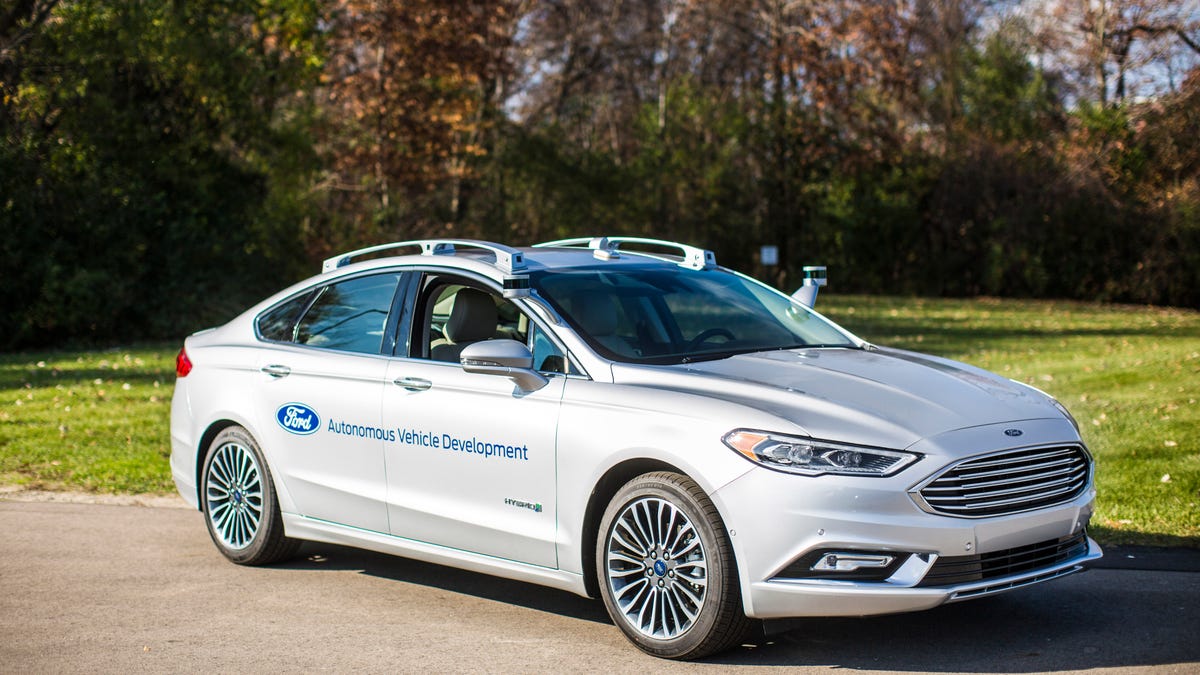Ford to reveal new Fusion Hybrid autonomous development vehicle at CES
Sensor, computer software and hardware upgrades bring Ford's self-driving cars closer to production.

It's been three years since Ford launched its fleet of 10 first-generation Fusion Hybrid autonomous research vehicles, which have seen a handful of advancements including gaining the ability to drive on snow-covered roads, and operating in the dark without headlights. Joining the stable this year will be 20 next-generation autonomous research vehicles growing the Blue Oval's stable of self-driving development vehicles to 30. Ford will show the new car next week at CES in Las Vegas.
The new cars, again based off of Ford Fusion Hybrids, gain more computer processing power thanks to new hardware, new electrical controls and Lidar sensors. The latter possibly explaining the Dearborn, Michigan-based company's investment into Velodyne Lidar earlier this year.
All of the upgrades focus on improving the car's virtual driver system that combines Lidar, radar sensors, cameras, detailed 3D maps, machine learning and lots of computing power to play the part of the driver. How much power? Apparently so much that the even the Fusion Hybrid's high-voltage battery pack wasn't enough to run all the computers requiring the addition of a generator to supply the necessary juice.
One thing the autonomous research vehicles aren't high on is trunk space because that's where the brains of the whole operation are located. Processing all information from the sensors and cameras to pick the best route, merge into traffic, adjust speed, avoid obstacles, read traffic lights and all other decisions required while driving has the computer generating 1 terabyte of data an hour. Just how much data is 1 terabyte? Ford says it's more than an average person uses on a smartphone in 45 years.
The addition of the 20 new vehicles is only the beginning of Ford's autonomous vehicle development push. Plans are already in place for the fleet to triple again from 30 to 90 development vehicles next year in hopes of delivering production autonomous vehicles to ride hailing services in 2021.

